This is a beautiful vintage pair of low open bookcases in the Sheraton style with adjustable shelves.
They are made from burr walnut and have beautiful satinwood inlaid decoration with crossbanding.
Each bookcase has two adjustable shelves.
There is no mistaking their unique quality and design, which is certain to make them a talking point in your home.
Condition:
In excellent condition, please see photos for confirmation of condition.
Dimensions in cm:
Height 101 cm x Width 100 cm x Depth 32 cm
Dimensions in inches:
Height 3 foot, 4 inches x Width 3 foot, 3 inches x Depth 1 foot, 1 inch
Burr Walnut
refers to the swirling figure present in nearly all walnut when cut and polished, and especially in the wood taken from the base of the tree where it joins the roots. However the true burr is a rare growth on the tree where hundreds of tiny branches have started to grow. Burr walnut produces some of the most complex and beautiful figuring you can find.
Satinwood
is a hard and durable wood with a satinlike sheen, much used in cabinetmaking, especially in marquetry. It comes from two tropical trees of the family Rutaceae (rue family). East Indian or Ceylon satinwood is the yellowish or dark-brown heartwood of Chloroxylon swietenia.
The lustrous, fine-grained, usually figured wood is used for furniture, cabinetwork, veneers, and backs of brushes. West Indian satinwood, sometimes called yellow wood, is considered superior. It is the golden yellow, lustrous, even-grained wood found in the Florida Keys and the West Indies.
It has long been valued for furniture. It is also used for musical instruments, veneers, and other purposes. Satinwood is classified in the division Magnoliophyta, class Magnoliopsida, order Sapindales, family Rutaceae.
Thomas Sheraton
(1751 - 1806) was an English cabinetmaker and one of the leading exponents of Neoclassicism. Sheraton gave his name to a style of furniture characterised by a feminine refinement of late Georgian styles and became the most powerful source of inspiration behind the furniture of the late 18th century. His four-part Cabinet-Maker and Upholsterers’ Drawing Book greatly influenced English and American design.
Sheraton was apprenticed to a cabinetmaker, but he became better known as an inventor, artist, mystic, and religious controversialist. Initially he wrote on theological subjects, describing himself as a “mechanic, one who never had the advantage of collegiate or academical education.” He settled in London c. 1790, and his trade card gave his address as Wardour Street, Soho.
Supporting himself mainly as an author, Sheraton wrote Drawing Book (1791), the first part of which is devoted to somewhat naive, verbose dissertations on perspective, architecture, and geometry and the second part, on which his reputation is certainly based, is filled with plates that are admirable in draftsmanship, form, and proportion.
In 1803 Sheraton, who had been ordained a Baptist minister in 1800, published his Cabinet Dictionary (with plates), containing An Explanation of All Terms Used in the Cabinet, Chair and Upholstery Branches with Dictionary for Varnishing, Polishing and Gilding.
Some of the designs in this work, venturing well into the Regency style, are markedly unconventional. That he was a fashionable cabinetmaker is remarkable, for he was poor, his home of necessity half shop. It cannot be presumed that he was the maker of those examples even closely resembling his plates.
Although Sheraton undoubtedly borrowed from other cabinetmakers, most of the plates in his early publications are supposedly his own designs. The term Sheraton has been recklessly bestowed upon vast quantities of late 18th-century painted and inlaid satinwood furniture, but, properly understood and used in a generic sense, Sheraton is an appropriate label recognizing a mastermind behind the period. The opinion that his lack of success was caused by his assertive character is hypothetical.
Si tratta di una bella coppia vintage di librerie basse a giorno in stile Sheraton con ripiani regolabili.
Sono realizzate in radica di noce e presentano una bella decorazione a intarsio in legno di raso con bordatura trasversale.
Ogni libreria ha due ripiani regolabili.
La qualità e il design unico di questa libreria sono indiscutibili e la renderanno un punto di riferimento per la vostra casa.
Condizioni:
In ottime condizioni, si prega di vedere le foto per confermare le condizioni.
Dimensioni in cm:
Altezza 101 cm x Larghezza 100 cm x Profondità 32 cm
Dimensioni in pollici:
Altezza 3 piedi, 4 pollici x Larghezza 3 piedi, 3 pollici x Profondità 1 piede, 1 pollice
Noce di bava
si riferisce alla figura vorticosa presente in quasi tutti i tipi di noce quando vengono tagliati e lucidati, e in particolare nel legno prelevato dalla base dell'albero dove si unisce alle radici. Tuttavia, la vera bava è una rara escrescenza dell'albero in cui centinaia di piccoli rami hanno iniziato a crescere. La radica di noce produce alcune delle lavorazioni più complesse e belle che si possano trovare.
Legno di raso
è un legno duro e resistente con una lucentezza satinata, molto utilizzato in ebanisteria, soprattutto per l'intarsio. Proviene da due alberi tropicali della famiglia delle Rutaceae (famiglia della ruta). Il legno di raso dell'India orientale o di Ceylon è il durame giallastro o marrone scuro della Chloroxylon swietenia.
Il legno, lucido, a grana fine e di solito figurato, è utilizzato per mobili, ebanisteria, impiallacciature e dorsi di spazzole. Il legno di raso delle Indie occidentali, talvolta chiamato legno giallo, è considerato superiore. È il legno giallo oro, lucido e a grana uniforme che si trova nelle Florida Keys e nelle Indie Occidentali.
È stato a lungo apprezzato per i mobili. Viene utilizzato anche per strumenti musicali, impiallacciature e altri scopi. Il legno di raso è classificato nella divisione Magnoliophyta, classe Magnoliopsida, ordine Sapindales, famiglia Rutaceae.
Thomas Sheraton
(1751 - 1806) è stato un ebanista inglese e uno dei principali esponenti del Neoclassicismo. Sheraton diede il suo nome a uno stile di mobili caratterizzato dalla raffinatezza femminile degli stili tardo georgiani e divenne la più potente fonte di ispirazione per i mobili della fine del XVIII secolo. Il suo libro di disegni per ebanisti e tappezzieri, diviso in quattro parti, influenzò notevolmente il design inglese e americano.
Sheraton fu apprendista ebanista, ma divenne più noto come inventore, artista, mistico e polemista religioso. Inizialmente scrisse su argomenti teologici, descrivendosi come un "meccanico che non ha mai avuto il vantaggio di un'educazione collegiale o accademica" Si stabilì a Londra intorno al 1790 e il suo biglietto da visita riportava l'indirizzo di Wardour Street, Soho.
Sostenendosi principalmente come autore, Sheraton scrisse Drawing Book (1791), la cui prima parte è dedicata a dissertazioni un po' ingenue e verbose sulla prospettiva, l'architettura e la geometria, mentre la seconda parte, su cui si basa certamente la sua reputazione, è piena di tavole mirabili per disegno, forma e proporzione.
Nel 1803 Sheraton, che nel 1800 era stato ordinato ministro battista, pubblicò il suo Cabinet Dictionary (con tavole), contenente An Explanation of All Terms Used in the Cabinet, Chair and Upholstery Branches with Dictionary for Varnishing, Polishing and Gilding.
Alcuni dei progetti di quest'opera, che si spingono fino allo stile Regency, sono decisamente anticonvenzionali. Il fatto che fosse un ebanista alla moda è notevole, poiché era povero e la sua casa era necessariamente una mezza bottega. Non si può presumere che sia stato l'autore di quegli esemplari che assomigliano anche solo lontanamente ai suoi piatti.
Sebbene Sheraton abbia indubbiamente preso in prestito da altri ebanisti, la maggior parte dei piatti delle sue prime pubblicazioni sono presumibilmente disegni suoi. Il termine Sheraton è stato incautamente affibbiato a grandi quantità di mobili in legno satinato dipinto e intarsiato della fine del XVIII secolo, ma, se correttamente inteso e utilizzato in senso generico, Sheraton è un'etichetta appropriata che riconosce la mente del periodo. L'opinione che il suo scarso successo sia stato causato dal suo carattere assertivo è ipotetica.

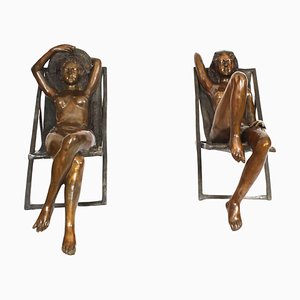
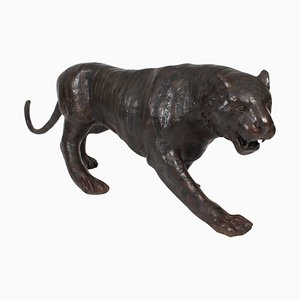
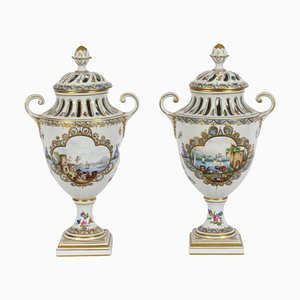
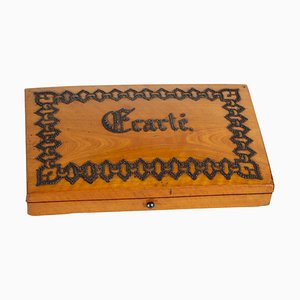
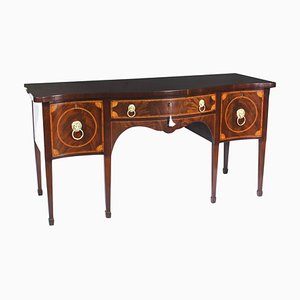

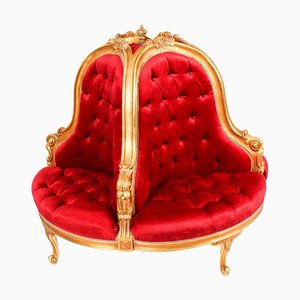
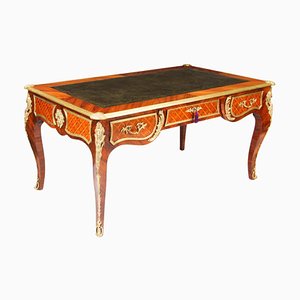
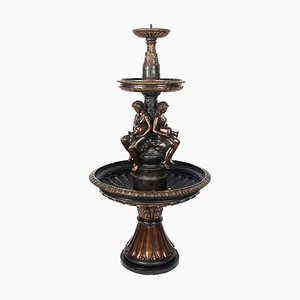
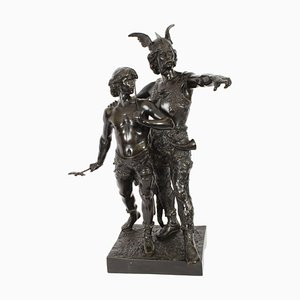
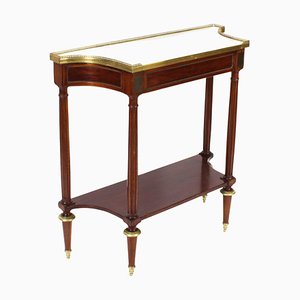
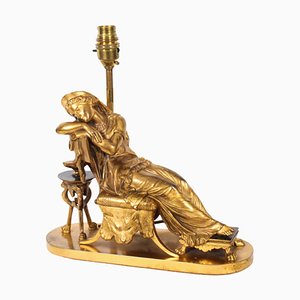
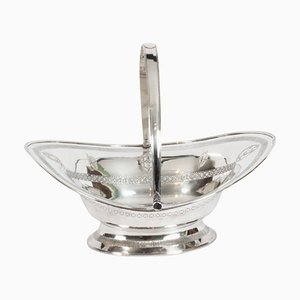


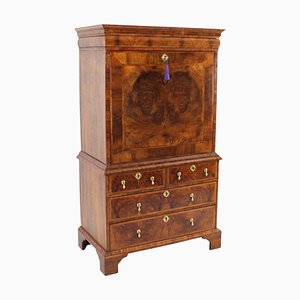
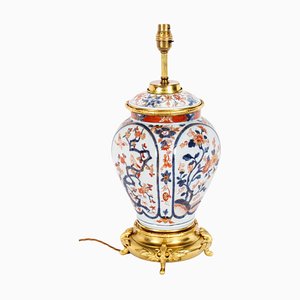
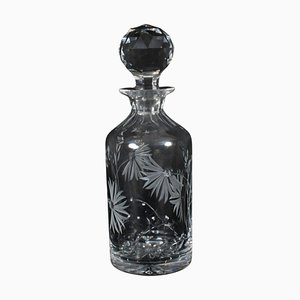

Contattaci
Fai un'offerta
Abbiamo notato che sei nuovo su Pamono!
Accetta i Termini e condizioni e l'Informativa sulla privacy
Contattaci
Fai un'offerta
Ci siamo quasi!
Per seguire la conversazione sulla piattaforma, si prega di completare la registrazione. Per procedere con la tua offerta sulla piattaforma, ti preghiamo di completare la registrazione.Successo
Grazie per la vostra richiesta, qualcuno del nostro team vi contatterà a breve.
Se sei un professionista del design, fai domanda qui per i vantaggi del Programma Commerciale di Pamono